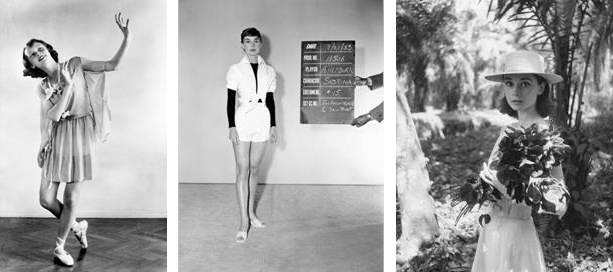
LONDON – Thirty-five important photographs of Audrey Hepburn from the personal collection of her sons, Sean Hepburn Ferrer and Luca Dotti, will go on rare UK display in the National Portrait Gallery’s summer exhibition “Audrey Hepburn: Portraits of an Icon,” it was announced Tuesday.
This major photography exhibition, which will explore the life and career of the celebrated film star, is the first British exhibition to be organized with support from the Audrey Hepburn Estate.
Included in the selection of photographs lent to the exhibition will be a portrait of Hepburn performing a dance recital in 1942, aged 13, and a rarely seen photograph of her taken on location in Africa during the filming of The Nun’s Story by Leo Fuchs in 1958. Also included will be a behind-the-scenes photograph of Hepburn wearing a costume designed by Edith Head during a fitting for her title role in Sabrina (released 1954).
This remarkable selection of photographs includes an array of images of Hepburn taken throughout her lifetime, from early photographs of her before she was famous to formal portraits and photographs taken on set during the making of some of her most loved films. The earliest portrait on loan from the collection of the Audrey Hepburn Estate is from 1938, showing Hepburn as a 9-year-old girl, and the most recent is from her last major photo shoot, taken by Steven Meisel in 1991.
“Audrey Hepburn: Portraits of an Icon” (July 2–Oct. 18) will explore Hepburn’s fascinating life and career as a celebrated film star, fashion icon and humanitarian. The exhibition will follow Hepburn’s rise to fame, from her early years in the Netherlands and as a dancer and chorus girl in London’s West End, to her becoming a stage and screen icon, and culminating in her philanthropic work in later life. The exhibition will showcase rarely seen photographs from the Audrey Hepburn Estate along with iconic portraits of Hepburn by leading photographers of the 20th century, including Richard Avedon, Cecil Beaton, Angus McBean, Irving Penn, Terry O’Neill and Norman Parkinson.
Highlights from the exhibition will include examples of her early work in London as a fashion model for photographs by Antony Beauchamp for the department store Marshall & Snelgrove, and the highly successful Crookes Lacto-Calamine skin-cream campaign, photographed by Angus McBean in 1950. Photographs by Larry Fried, showing Hepburn in her dressing room on Broadway for Gigi (1951); Hepburn captured in Italy at the time of filming War and Peace (1955) by Philippe Halsman and George Daniell; publicity photographs for Funny Face (1957); and Terry O’Neill’s photographs taken during the making of films How to Steal a Million (1966) and Two for the Road (1967), will be among the portraits on show, documenting Hepburn’s transformation throughout the 1950s and 1960s, and her key roles on stage and screen.
Also included in the exhibition will be vintage magazine covers, from the Picturegoer in 1952 to the front cover of Life magazine featuring Hepburn in Givenchy for her role in Breakfast at Tiffany’s in 1961, taken by Howell Conant. Original film stills and ephemera will complete the story of one of the world’s most photographed women.
Co-curated by Terence Pepper, senior special adviser of photographs, National Portrait Gallery and Helen Trompeteler, associate curator of photographs, National Portrait Gallery, “Audrey Hepburn: Portraits of an Icon” will follow the captivating rise of one of the world’s first truly international stars.
Born in Brussels, Belgium (1929), to a Dutch Baroness and an Anglo-Irish father, Hepburn moved to London from Amsterdam in late 1948 to take up a ballet scholarship at the Rambert Ballet School in Notting Hill. After a number of important stage performances as a chorus girl in the West End, Hepburn made her earliest screen debuts in British films. Her critically acclaimed stage performance in Gigi (1951) introduced Hepburn to American theater audiences and confirmed her position as a new star. Throughout the 1950s and 1960s, Hepburn’s career flourished with a string of highly successful roles, and she became the first actress to win an Academy Award, Golden Globe and BAFTA Award for a single performance (her leading role in Roman Holiday, 1953). Hepburn worked as a UNICEF ambassador from 1988 until her death in 1993. She was awarded the Presidential Medal of Freedom in 1992 in recognition of her contribution to the arts and her humanitarian work.

